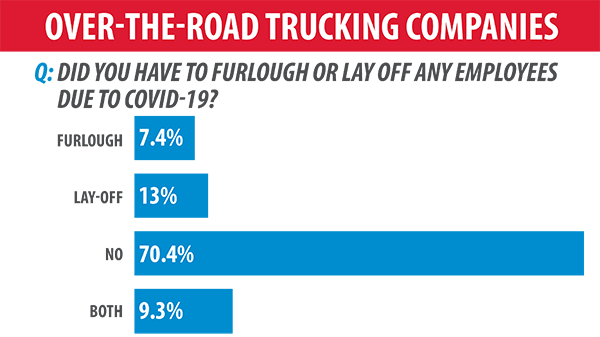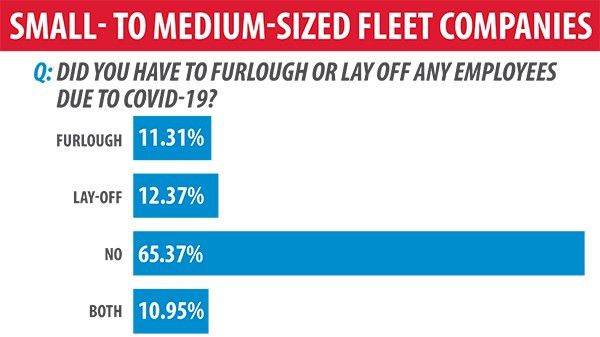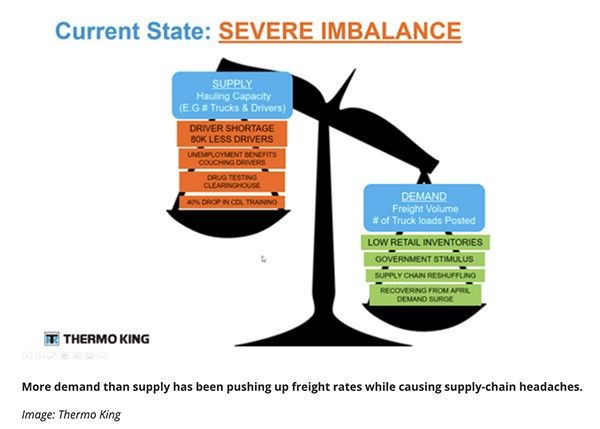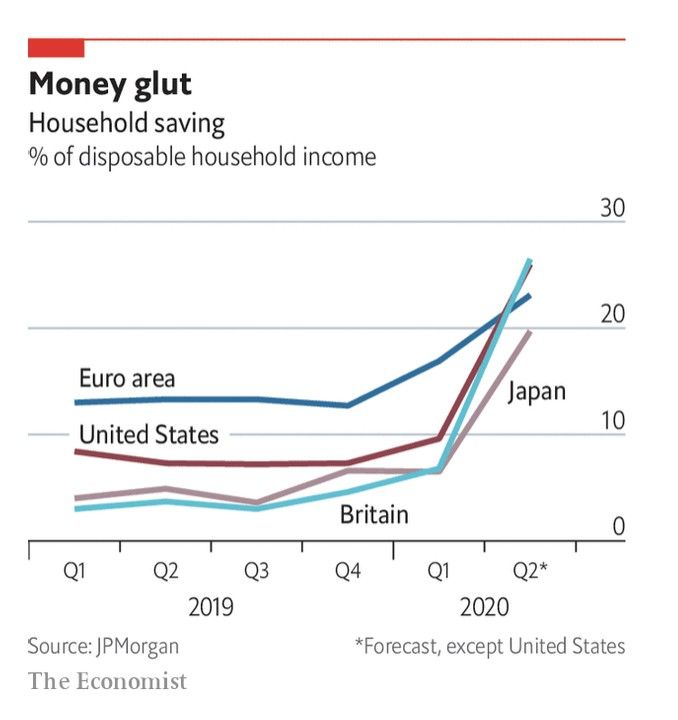Stay connected
Subscribe to our Inside WEX blog and follow us on social media for the insider view on everything WEX, from payments innovation to what it means to be a WEXer.

Many industries have been impacted by COVID-19, in fact, few have managed to duck the wave of woes the pandemic has brought down on the world. Business Insider recently published a list of the ten types of businesses most impacted by the pandemic which included restaurants, retail, dental offices, and movie production companies. Any industry related to travel has been hit hard, and businesses that require venturing out of the house, including dry cleaners, hair salons, and nail salons, have also been suffering.
The fleet industry, which encompasses a range of businesses with anywhere from a few trucks to hundreds in their fleet, has managed to survive despite significant challenges. Businesses that manage fleets have shown resilience and grit during an unusually difficult stretch for our country.
How has the fleet industry changed in response to the pandemic? How have businesses within the industry shown their mettle? To begin to understand the changing landscape, we first wanted to know how the economy has altered in the face of the crisis.
COVID’s impact on human behavior has ricocheted across a vast variety of businesses. Many of these enterprises are ones that get their supplies and commodities from fleet company deliveries: restaurants, big box stores, grocery stores, pharmaceutical companies. When the majority of us were ordered to stay home, we also began to change how we spent our money and time. Stanford economist Nicholas Bloom has conducted surveys over the last eight months about how this reshaped economy–he refers to it as the “working-from-home-economy”–will impact us all.
Today in the U.S., more than twice as many workers are working from home than those going in to work. That work-from-home workforce currently accounts for more than two thirds of U.S. economic activity. Bloom posits that this new model is in large part here to stay even after vaccines have been approved and implemented. Companies that had formerly stigmatized working from home have reevaluated and now see the benefits of a remote workforce. If Bloom’s analysis proves correct, the attendant changes to the economy, and in turn to the fleet management industry, will also remain.
Workers who had formerly gone into cities and spent their money in shops, restaurants, and cafes are now staying in the suburbs and mostly staying at home. Bloom believes that once a vaccine is approved, a large portion of those workers will continue to stay in the suburbs and that a chunk of American spending will be newly allocated to suburban life rather than to cities. The changes Bloom describes will alter the cadence, route patterns, and types of products that fleet companies are responsible for transporting for the foreseeable future.
The stay-at-home orders enacted in the spring of 2020 impacted fleet managers in various ways. There was an initial bump in fleet activity — trucking volumes initially increased by 30% — and then a precipitous dip in March and April when many states first shut down. During that first dip, over half of the fleet companies surveyed in a study by Heavy Duty Trucking (HDT) reported a decrease in business. Americans were adjusting to the new order of things and the industry was feeling the shift.
Across the country, lockdowns also dramatically impacted the restaurant industry. Six months into the pandemic, an estimated 100,000 restaurants had closed across the U.S. This accounts for nearly one out of every six restaurants in the country. The painful blow to business has not stopped. 40% of restaurant owners whose businesses still remain don’t think they will be in business six months from now. As a result, there have been major disruptions in the supply chain and delivery of food in America. The decreased desirability of eating out at restaurants, and the effects of months of closure during lockdowns, meant that far fewer restaurants required truck deliveries. As a result, fleet management had to find other sources of revenue.
While there was an initial jump in business for fleet companies when the pandemic initially hit, fleet managers soon found themselves scrambling for purchase. An April study by HDT showed that 78% of fleet managers reported a drop in business month over month, with the smaller shops (1-4 trucks) impacted more than the 100+ fleets. Some companies reported having taken advantage of the Payroll Protection Program and the CARES Act, which helped carry them through the roughest patch.
HDT reports that in May things began to look up for fleet management as they solidified new income streams and businesses began re-opening: “Once some states started reopening, [business] started slowly but steadily returning, to the point where freight volumes and rates even exceeded the banner year of 2018.” Fleet business was back and going strong.
A June survey conducted by WEX reflects this resurgence with 70% of large trucking companies and 65% of small to medium fleet companies reporting no layoffs or furloughs since the start of the pandemic. Retaining employees through a dip in business reflects fleet management’s ability to adapt. By finding new revenue streams, fleet companies were well-positioned to embrace them with a robust and ready staff.

WEX June 2020 Survey: Trucking Fleet Resilience During COVID

WEX June 2020 Survey: Small- to Medium-Sized Fleet Resilience During COVID
With restaurants entirely shut down or greatly restricted, Americans were far less likely to sit down at a restaurant for dinner. Despite this shift, they still needed to eat, and that meant more food needed to fill the shelves at grocery stores. A Fleet Advantage survey conducted in August of 2020 illustrates the way the loss of freight to restaurants was shifted to an increase in freight to grocery stores: “36% of [trucking] companies had to change routes for as many as 40% of the trucks in their fleets, and 25% have had to change what their trucks are primarily hauling. The shift was mostly a result of the number of restaurant closings across the country, with fleets shifting their routes to handle the increased demand for grocery items and retail/merchandise delivery.” A large-scale shake-up was happening, and fleet companies were adapting and hanging on.
Further fortifying business for fleet companies, there was a surge in buying during the first few months of the pandemic as people panicked about stay at home orders. In March alone, sales in grocery stores were boosted by 29% compared to March of 2019. This resulted in an imbalance of supply and demand. Who among us didn’t experience the unwelcome surprise of turning the corner onto an empty toilet paper aisle or not being able to find random items like taco shells when grocery shopping? Hand sanitizer and flour were other items that virtually disappeared from the shelves. And Personal Protective Equipment (PPE) was another item that quickly became scarce as demand shot up. PPE was at the same time a new source of freight for fleet companies when other available shipping income dried up due to lockdowns.
This imbalance between supply and demand persists today across a spectrum of suppliers. Customers hoping to fix their broken dishwasher or stove or furnace are forced to wait months on end for a single part. In many cases, suppliers are unable to provide a date by which to expect a shipment of supplies and parts. At the same time, new appliances are also in short supply. At big-box stores like Best Buy and Lowe’s, employees are forced to tell customers they need to wait three months or more for a new stove, refrigerator or washing machine to be delivered. Those who have worked for many decades in appliance sales say they have never experienced delays like this in their entire career. These longer than usual wait times have been attributed to factory closures globally due to waves of the virus that have infected different regions of the world over the last eight to twelve months.

The current supply chain imbalance is increasing demand for freight delivery
Disarray in the supply chain causes a frenetic reaction in the fleet business because knowing which freights will be coming and planning for them is an essential part of managing a fleet. It’s much harder to make these calculations when demand outpaces supply. Concurrent with commodity shortages, the fleet industry is experiencing a decrease in overall driver capacity. As the supply chain imbalance causes record freight and rates, the problem becomes getting enough drivers behind the wheel to pick up and deliver those shipments. The driver workforce is now about 80,000 fewer than it was a year ago. The retail industry has been attempting to counteract the imbalance by holding multiple Black-Friday-type sales both before and after the Thanksgiving holiday. If the retail industry can continue to assist in spreading demand out over a longer period of time, there’s a greater chance that supply will be able to catch up and level out. Regardless, the increase in demand is positive for fleet companies, even as it adds pressure to find and hire a large number of drivers.
The small- to medium-sized fleet companies included in WEX’s June 2020 survey ranged from those working in agriculture, service, oil and gas, distribution, manufacturing, construction, and several other industries. The majority surveyed from this group had one to 16 trucks in their fleet. Although much of the country was shut down due to the pandemic, some businesses in the service trades actually saw an increase in business.
As lockdowns have encroached on daily life, many working people have been spending more time experiencing their homes and coming to understand the ways that they could be improved upon. Many of these workers want to adapt their home environments to make them as comfortable and utilitarian as possible. One economic result of this trend has been an uptick in homeowners hiring tradespeople for home construction projects. Consumer Specialists conducted a survey of more than 600 homeowners in June, showing that 57% engaged in a home improvement project between March and May of 2020. On average, those homeowners spent $1,750 making home improvements.
Fleets of plumbers, construction crews, landscaping companies, and others in the service industry saw an increase in business as a result. According to a recent article published by NPR, the past eight months has seen more home repair work than has ever been documented for an eight-month timeframe in the past, and this activity is up 50% from the same period last year with landscapers taking the lion’s share of the profits. Three out of four homeowners surveyed by NPR reported having completed a large home repair project since the virus began to spread.
In direct contrast to the 8 million people who have slipped under the poverty line since the pandemic began, some Americans are finding that they have more cash on hand. Those who have retained their jobs who would normally be spending money on theatre tickets, dinner out, or a night at the movies, are noticing that their savings are increasing during COVID which also accounts for the rise in spending on home improvements projects.

COVID has had a direct impact on the percentage of disposable income some households are experiencing
A third factor contributing to this increase in home repair projects has been the recent trend of extremely low-interest rates which have allowed homeowners to borrow at dizzyingly low rates and has made the prospect of taking out a loan far less onerous for many.
Piggy-backing onto this development was a surge in home sales: because interest rates were suddenly low, buyers came out in droves, adding to a surge in home improvement projects with both sellers preparing to put their homes on the market and buyers making improvements to their new homes before moving in.
All this amounts to an increase in business for the small- to medium-sized fleet companies who provide those services – good news for those sectors of the fleet economy.
The atmosphere out on the road has changed for truck drivers since the beginning of the pandemic. They have faced hardships such as an inability to find food while traveling, access to fewer restrooms in places where they ordinarily would have had access, and inhospitable conditions in general. This new atmosphere has led to a wave of early retirement in the trucking industry and a decrease in graduation rates from trucking schools with driver schools producing graduates at only 60% to 70% the rate they were pre-pandemic. Some trucking schools also closed down in the last several months. Their inability to keep operating through the lockdown has also impacted graduation rates. Driver turnover has improved slightly, but when a driver quits or changes careers, they are much more difficult to replace than they were formerly. As a result, some companies have raised the rate of truck driver pay in hopes of incentivizing workers and increasing retention and engagement.
There have also been stories of kindness in the trucking industry during the pandemic, including a story that we shared on our site about a truck driver’s son making meals for strangers. As HDT reported, “Throughout the pandemic, truck drivers have been considered essential workers and kept delivering the goods Americans needed, from ventilators and masks to toilet paper and meat. But they’ve faced challenges at shippers and receivers, from temperature checks to being banned from restrooms.”
Fleet managers work to keep drivers safe and their spirits up during this time when conditions on the road are less than ideal, which helps the fleet workforce continue to deliver necessary supplies for millions of Americans who are confined to their homes.
Longer-term, the changes to how fleets are managed have already started to take shape. HDT, through their surveys and discussions with industry leaders, reports that in the fleet industry, “we may see faster adoption of technology, such as paperless and workflow solutions; more flexible work-from-home policies; more purposeful travel; better communication; more efficient driver onboarding; new ways of driver training; increased use of telemedicine; and better disaster response/business continuity planning.” Fleet managers are looking for ways to retain drivers through new and improved policies and programs.
According to HDT, the pandemic may encourage more fleet companies to consider putting a business continuity plan in place: “A joint survey by the American Transportation Research Institute and the Owner-Operator Independent Drivers Association found that 45% of respondents did not have such plans before the pandemic. For fleets with fewer than five power units, almost 80% of respondents did not have a disaster response plan. This is in stark contrast to fleets with more than 1,000 trucks, where 70% of respondents had a disaster response plan in place.” Smaller fleet companies felt underprepared when COVID hit, and as a result, are expected to react by putting better practices and procedures in place so they don’t get blindsided by the next disaster. Building a strong business continuity plan will also provide fleet companies with ways to improve retention and engagement.
Whatever changes are afoot, and whatever ways supply chains may be adapting, our nation relies on fleet companies to keep us supplied with all the products we depend on in our daily lives. As Food Logistics Magazine describes it, “food distributors are left to keep goods moving across the United States, maintain driver/technician health and safety measures, adapt to quickly changing market conditions and business models, all while keeping an eye toward long-term operational efficiencies.” In no small measure, fleet management is responsible for keeping our shelves stocked, our pharmaceuticals and PPE delivered all while continually adjusting to an ever-changing market.
As we enter a new season where we are seeing an increase in COVID cases across the country and states are starting to lockdown again, we will rely on the fleet industry to keep us supplied and well. Once a vaccine has been approved, it will be fleet companies that will be responsible for the critical distribution of a COVID vaccine nationwide. Our hats go off the entire fleet industry for the heroic effort they have undertaken during an unprecedented time. Companies across the country, and the drivers that power them, have adapted with resiliency and grace.
To learn more about WEX, a growing and global organization, please visit wexinc.com.
Resources:
Business Insider
Bureau of Labor and Statistics
HDT (Heavy Duty Trucking)
CargoNet
TruckNews
TruckingTruth
Today
Stanford University Institute for Economic Policy Research
NPR
Brookings Institute
Food Logistics Magazine
Business Wire
The Economist
Freight Waves
The Baltimore Sun
McKinsey
Investopedia
The New York Times
Subscribe to our Inside WEX blog and follow us on social media for the insider view on everything WEX, from payments innovation to what it means to be a WEXer.